Email marketing excels in its cost-effectiveness and ability to reach a targeted audience efficiently. Email marketing has become a vital tool for businesses to connect with their audience.
It allows companies to deliver personalized messages directly to customers’ inboxes, enhancing engagement. This method is not only cost-effective but also provides measurable results, enabling businesses to track open rates, click-through rates, and conversions. By segmenting the audience, companies can tailor their campaigns to specific groups, increasing the relevance and impact of their messages.
Email marketing also helps build long-term relationships with customers, fostering loyalty and trust. With the right strategies, businesses can leverage email marketing to drive traffic, generate leads, and boost sales effectively.

Credit: www.researchgate.net
Introduction To Email Marketing
Email marketing is a powerful tool. It helps businesses connect with their audience. Businesses send emails to inform, engage, and convert leads into customers. This method is cost-effective and measurable. It also builds customer loyalty and trust.
Importance In Digital Marketing
Email marketing plays a crucial role in digital marketing. It allows direct communication with customers. Businesses can share updates, promotions, and news. This keeps customers engaged and informed. It also drives traffic to websites and increases sales. Email marketing has a high return on investment (ROI). For every dollar spent, you can expect a significant return.
- Direct communication with customers
- Promotes engagement and loyalty
- Increases website traffic
- High return on investment (ROI)
Historical Perspective
Email marketing has evolved over the years. It started with simple text emails. In the late 1990s, HTML emails came into play. These emails included images and links. Over time, email marketing became more sophisticated. Automation and personalization improved effectiveness. Today, email marketing is data-driven and targeted. It continues to be a key strategy for businesses.
| Year | Development |
|---|---|
| 1978 | First email marketing campaign |
| Late 1990s | Introduction of HTML emails |
| 2000s | Rise of automation and personalization |
| Present | Data-driven and targeted strategies |
Benefits Of Email Marketing
Email marketing is a powerful tool. It helps businesses connect with their audience. This method offers many advantages. Below are the key benefits of email marketing.
Cost-effectiveness
One major advantage is cost-effectiveness. Email marketing is cheaper than other forms of advertising. You do not need to spend much money. Sending emails is almost free. You only pay for an email service provider.
Many businesses prefer email marketing. They save money on printing and postage. This allows them to allocate the budget elsewhere. Here is a table comparing costs:
| Marketing Method | Cost |
|---|---|
| Email Marketing | Low |
| Print Advertising | High |
| Television Ads | Very High |
High Roi
Email marketing provides a high ROI. Businesses see a great return on investment—a good return for every dollar spent. This makes email marketing very attractive.
Email campaigns are easy to track. You can measure success quickly. Analytics help you understand what works. This allows you to improve future campaigns. Here are some steps to boost your ROI:
- Segment your email list
- Personalize your messages
- Use compelling subject lines
- Include clear calls to action
Building An Email List
Building an email list is crucial for successful email marketing. It allows you to reach your audience directly. This section will cover effective strategies for growing your email list and maintaining engagement with your subscribers.
Strategies For Growth
Growing your email list can be achieved through various strategies. Here are some effective methods to consider:
- Offer Incentives: Provide discounts or free resources for sign-ups.
- Use Sign-up Forms: Place forms on your website, blog, and social media.
- Leverage Social Media: Promote your email list on social platforms.
- Run Contests: Host contests that require an email for entry.
- Collaborate with Influencers: Partner with influencers to reach a wider audience.
Maintaining Engagement
Keeping your subscribers engaged is critical to a successful email list. Here are ways to maintain engagement:
- Send Regular Updates: Keep your audience informed with regular emails.
- Personalize Content: Use names and tailor content to interests.
- Segment Your List: Group subscribers by interests or behaviors.
- Provide Value: Share valuable content, tips, and exclusive offers.
- Ask for Feedback: Encourage subscribers to share their thoughts and preferences.
Building and maintaining an email list requires effort and strategy. Following these tips can help you grow your list effectively and keep your audience engaged.
Crafting Effective Emails
Email marketing offers many advantages according to the Indonesian Dictionary (KBBI). Crafting effective emails is key to maximizing these benefits. Let’s dive into some essential components of crafting engaging emails.
Compelling Subject Lines
A compelling subject line grabs attention instantly. It should be short and to the point. Keep it under 50 characters for the best impact. Use action words to create urgency or curiosity. For example:
- Exclusive Offer Just For You!
- Don’t Miss Out: Limited Time Deal
Personalize the subject lines to increase open rates. Include the recipient’s name or location.
Personalized Content
Personalized content makes the email feel unique. Use the recipient’s name in the greeting. Segment your audience based on interests or behaviors. Create content that speaks directly to each segment.
For instance, if you sell sports gear, have separate emails for runners, cyclists, and swimmers. This ensures relevancy and higher engagement.
| Segment | Content Example |
|---|---|
| Runners | Top 10 Running Shoes of 2023 |
| Cyclists | Essential Gear for Every Cyclist |
| Swimmers | Best Swimsuits for Competitive Swimming |
Use dynamic content blocks to tailor emails further. These blocks change based on the recipient’s preferences or past actions.
Crafting effective emails requires attention to detail. Focus on compelling subject lines and personalized content. This approach ensures your emails are opened and read.
Segmentation And Targeting
Email marketing is powerful. It allows you to segment and target your audience. This ensures your messages are relevant and engaging.
Audience Segmentation
Audience Segmentation helps you divide your email list into smaller groups. Each group has specific characteristics.
- Age
- Location
- Gender
- Interests
Segmenting your audience allows you to send personalized emails. This increases engagement and conversion rates.
Behavioral Targeting
Behavioral Targeting focuses on the actions of your audience. Track their behavior to send them relevant emails.
Here are some actions you can track:
- Email opens
- Link clicks
- Purchase history
- Website visits
Tracking these behaviors helps you understand your audience better. You can then send tailored content based on their actions.
| Segmentation Type | Benefits |
|---|---|
| Demographic | Personalized content |
| Behavioral | Relevant offers |
Automation In Email Marketing
Email marketing automation saves time and boosts efficiency. Automated emails target specific actions and behaviors. This process enhances engagement and conversion rates.
Workflow Automation
Workflow automation streamlines email marketing tasks. It ensures timely and relevant communication with subscribers. Create a series of emails that guide users through a journey.
For example, a new subscriber receives a welcome email. After a week, they get an introduction to your services. The following email may offer a discount. This sequence keeps your audience engaged.
Workflow automation helps in:
- Onboarding new subscribers
- Nurturing leads
- Retaining customers
It reduces manual effort and increases consistency in messaging.
Triggered Emails
Triggered emails are sent based on user actions. They respond to specific behaviors, such as a purchase or a website visit. These emails are highly personalized and timely.
Examples of triggered emails include:
- Order confirmation emails
- Abandoned cart reminders
- Birthday or anniversary emails
Triggered emails can significantly improve open and click-through rates. They create a sense of relevance and urgency for the recipient.
Here is a table showing the benefits of triggered emails:
| Benefit | Description |
|---|---|
| Personalization | Emails tailor to user actions |
| Timeliness | Emails sent at the right moment |
| Engagement | Higher open and click-through rates |
Automation in email marketing offers numerous advantages. Workflow automation and triggered emails enhance engagement and conversion rates. These methods ensure timely, relevant, and personalized communication.
Analyzing Campaign Performance
Email marketing offers many advantages. One key benefit is the ability to track and analyze your campaign performance. By analyzing campaign performance, you can understand what works and what doesn’t. This helps you refine future campaigns for better results.
Key Metrics
To analyze your email marketing performance, focus on critical metrics. These metrics provide insights into how your emails are performing. Here are some important ones:
- Open Rate: The percentage of recipients who open your email.
- Click-Through Rate (CTR): The percentage of recipients who click on links in your email.
- Bounce Rate: The percentage of emails that cannot be delivered.
- Conversion Rate: The percentage of recipients who take the desired action.
- Unsubscribe Rate: The percentage of recipients who unsubscribe from your emails.
Tracking these metrics helps you understand your audience’s behavior. It also enables you to improve your email.
marketing strategy.
Improving Open Rates
Open rates are crucial for email marketing success. Here are some tips to improve your open rates:
- Craft Compelling Subject Lines: A catchy subject line grabs attention. Keep it short and relevant.
- Personalize Your Emails: Use the recipient’s name. Personalized emails feel more engaging.
- Segment Your Audience: Group your audience based on interests. Send targeted content to each segment.
- Optimize Send Times: Test different times to see when your audience is most active.
- Use Preheader Text: The text that follows the subject line. Make it informative and enticing.
Implementing these strategies can help increase your open rates. This means more people will read your emails.
| Key Metric | Description |
|---|---|
| Open Rate | The percentage of recipients who open your email. |
| Click-Through Rate | The percentage of recipients who click on links in your email. |
| Bounce Rate | The percentage of emails that cannot be delivered. |
| Conversion Rate | The percentage of recipients who take the desired action. |
| Unsubscribe Rate | The percentage of recipients who unsubscribe from your emails. |

Credit: fliphtml5.com
Best Practices For Success
Leveraging email marketing effectively can significantly boost your business. To ensure success, follow these best practices. Proper execution will help maximize engagement and conversion rates.
Compliance With Regulations
Adhering to regulations is crucial for email marketing. Ensure your emails comply with laws like GDPR and CAN-SPAM. This includes obtaining consent before sending emails. Always provide an easy way for recipients to unsubscribe.
- Obtain Consent: Always get permission before adding someone to your email list.
- Include Unsubscribe Option: Make it easy for users to opt out of your emails.
- Respect Privacy: Do not share or sell your email list.
A/b Testing
A/B testing helps optimize email performance. Test different elements to see what works best. This includes subject lines, email content, and call-to-action buttons.
- Subject Lines: Test different subject lines to see which one gets more opens.
- Email Content: Experiment with different content types to see what engages your audience.
- Call-to-Action Buttons: Test various buttons to see which one drives more clicks.
Use the data from A/B tests to refine your strategy. Consistently tweak your approach for better results.
| Element | What to Test |
|---|---|
| Subject Lines | Length, phrasing, personalization |
| Email Content | Text vs. images, tone, length |
| Call-to-Action Buttons | Color, text, placement |
Future Trends In Email Marketing
Email marketing is evolving fast. Brands need to stay updated. Future trends are shaping this field. They offer new opportunities and challenges. Let’s explore two major trends.
AI and Machine Learning
Artificial Intelligence (AI) and Machine Learning (ML) are transforming email marketing. These technologies offer smarter solutions. They help in personalizing email content. Marketers can analyze user behavior quickly. They can predict future actions.
Benefits of AI in Email Marketing:
- Personalized Content: AI tailors messages for each user.
- Automated Campaigns: ML helps in automating email sequences.
- Enhanced Analytics: AI provides deeper insights.
AI tools can segment audiences better. They allow targeted campaigns. This increases engagement and conversions.
Interactive Emails
Interactive emails are the next big thing. They engage users like never before. These emails include elements like:
- Surveys: Users can complete surveys within the email.
- Polls: Quick polls increase user interaction.
- Embedded Videos: Videos can be played directly in the email.
Why Interactive Emails Matter:
- Higher Engagement: Users spend more time on interactive emails.
- Better User Experience: They offer a richer experience.
- Increased Conversion Rates: They drive more actions.
Interactive emails are fun and engaging. They make users feel involved. This improves brand loyalty and satisfaction.

Credit: fliphtml5.com
Frequently Asked Questions
What Is Email Marketing?
Email marketing is a digital strategy to promote products or services via email. It helps build customer relationships.
Why Is Email Marketing Effective?
Email marketing is effective due to its direct reach to the audience. It offers personalized content and measurable results.
How Does Email Marketing Boost Engagement?
Email marketing boosts engagement by sending targeted, relevant content. This increases open rates and click-through rates.
What Are The Benefits Of Email Marketing?
Email marketing benefits include cost-effectiveness, high ROI, and the ability to segment and personalize messages.
Conclusion
Email marketing is a powerful tool for businesses. It helps reach targeted audiences effectively. Utilize email marketing to boost engagement and conversions. By leveraging this strategy, you can enhance customer relationships and drive sales. Start implementing email marketing today to see significant growth and success for your business.


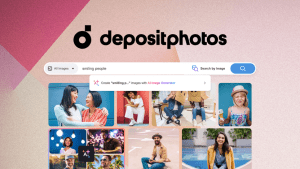

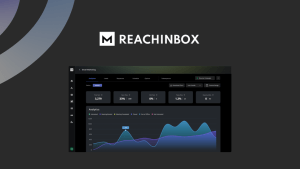
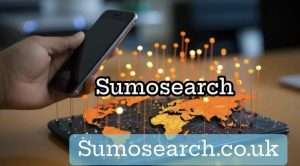
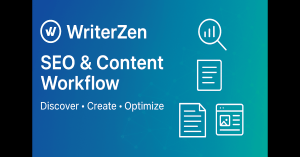
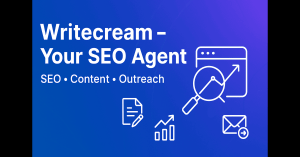
1 thought on “Keunggulan Email Marketing Adalah Kbbi: Boost Your Campaigns”